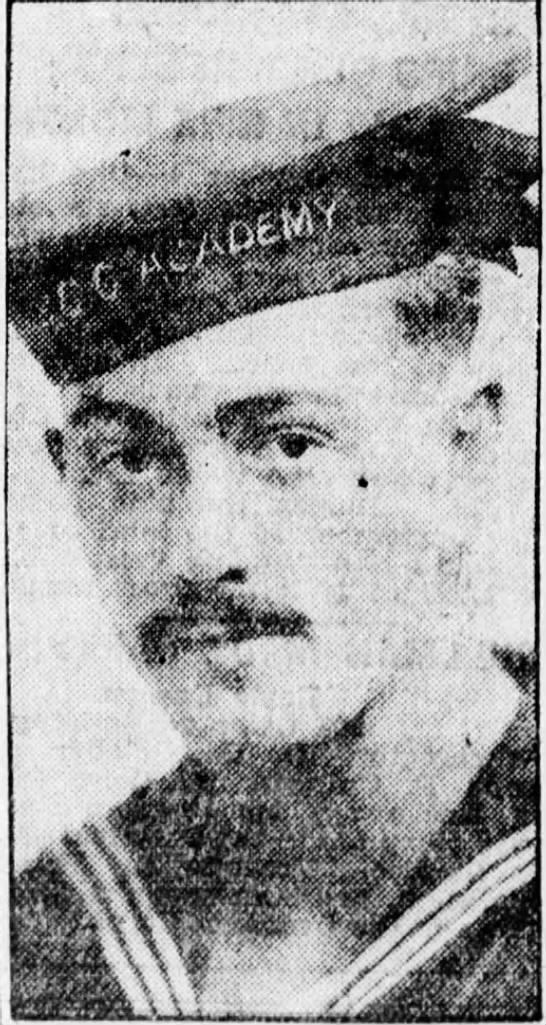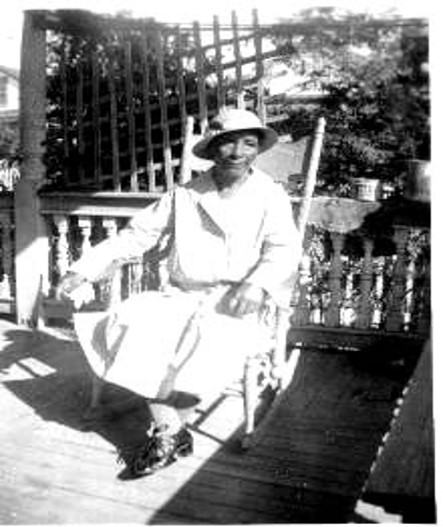Part Two; read Part One here
Today, August 4, is the 230th birthday of the United States Coast Guard. In honor of those Coast Guardsmen who gave their lives during World War I, a memorial was erected at Arlington National Cemetery in 1928.
The dedication of the Coast Guard War Memorial at Arlington National Cemetery on May 23, 1928 was a grand spectacle attended by dignitaries and other high-profile government officials. A select group of twenty people, wearing satin white ribbons and bearing red, blue or white admission tickets, were escorted to their seats near the floral-filled podium. They were the real reason for the construction and dedication of this memorial – family members of some of the men whose names were etched into the stone for perpetuity. In honor of the Coast Guard’s birthday, we share some of their stories, and those of their family members who died serving the United States in World War I.
 Laura Bothwell, of Brooklyn, New York, knew this would be a day she would never forget. Her husband, Thomas, who had died in 1922, had tirelessly maintained correspondence over the years with other families of Coast Guard members who had served on the USS Tampa, which had been destroyed in a German submarine attack on September 26, 1918. The Bothwells’ son, 1st Lieutenant Roy Ackerman Bothwell, who died in the attack at age 28, was Tampa’s longest serving officer. He had been ordered to another ship, but chose to stay on Tampa due to his deep friendship with Captain Charles Satterlee. His older brother, Harold, had been killed in action in France in August 1918, but their parents were not aware of Roy’s death until just two weeks after they were informed of Tampa’s demise.
Laura Bothwell, of Brooklyn, New York, knew this would be a day she would never forget. Her husband, Thomas, who had died in 1922, had tirelessly maintained correspondence over the years with other families of Coast Guard members who had served on the USS Tampa, which had been destroyed in a German submarine attack on September 26, 1918. The Bothwells’ son, 1st Lieutenant Roy Ackerman Bothwell, who died in the attack at age 28, was Tampa’s longest serving officer. He had been ordered to another ship, but chose to stay on Tampa due to his deep friendship with Captain Charles Satterlee. His older brother, Harold, had been killed in action in France in August 1918, but their parents were not aware of Roy’s death until just two weeks after they were informed of Tampa’s demise.
Her grief was shared by other families in attendance. Bertha Saldarini, the mother of Tampa Quartermaster Alexander Saldarini, was the president of the Ladies’ Auxiliary of the local American Legion post in Union Hill, New Jersey. It is believed that the 20-year-old Saldarini’s torso was found and identified at sea by his identification tags after Tampa was located. (The U.S. military used identification tags for the first time during World War I as a means of identifying those killed in combat.) Due to the condition of his body, he was reburied at sea, and the Coast Guard gave Saldarini’s identification tags to his family.


Left: Quartermaster Alexander Saldarini. Saldarini Collection, Coast Guard Historian’s Office.
Right: Seaman Gilbert James Doyle. Brooklyn Daily Eagle, October 4, 1918.
Jennie Doyle, of Brooklyn, New York, also attended the memorial dedication ceremony. Her son, Seaman Gilbert James Doyle, 24, was among those killed on Tampa. A law student at the time of his enlistment, Doyle been due for a furlough and had planned to visit his family. In 1931, Mrs. Saldarini and Mrs. Doyle were two of some 6,700 Gold Star mothers and widows—women who lost husbands or children during the war—who went to the American cemeteries in Europe on a government-funded pilgrimage, offered as a means for these women to gain closure. On the voyage over, a memorial service was held near Tampa’s watery Atlantic grave, and Mrs. Do
· Tampa had eleven Black crew members on board. William Weech, who died at age 31, was a steward on Tampa and the longest-serving Black crew member on board. His mother, Frederica, was the only Black family member in attendance at the dedication. Traveling all the way to Arlington from Key West, Florida, she must have felt immense pride seeing her son’s name etched in the granite. Today, American Legion Post #167 in Key West is named after Weech.


Left: Bertha Saldarini in Europe, 1931. National Archives.
Right: Mrs. Frederica Weech, mother of William Weech of Tampa, in an undated photo. Weech family.
· Elizabeth Nevins, the mother of 1st class boy James Joseph Nevins, who served on Seneca, also attended the dedication ceremony. Widowed in 1916, she also joined the 1931 Gold Star mothers’ pilgrimage to Europe. Nevins had enlisted in April 1917 and joined Seneca on August 23, 1918, roughly a month before his death. After Seneca was torpedoed off the coast of France on September 16, 1918, Nevins laced up the boots of one of his crewmates once the alarm was sounded to commence rescue efforts. Nicknamed “Smiling Jimmy”, the 18-year-old pleaded several times to participate in the rescue effort. At the very last moment, his wish was granted, and he jumped into the lifeboat. Seventeen hours later, Nevins noticed that his crewmate’s boots had not yet been taken off. He cut the rawhide laces and pulled them off his fellow crewman’s feet. Two minutes later, Nevins was lowered onto a raft in stormy, choppy waters amid pitch darkness. He was later seen hanging onto a log or wooden plank with three other men. They eventually became tired and slipped into the sea, one by one. Nevins was the first of the boys in his hometown of Greenville, Connecticut to die in the line of duty. The present-day Seneca bears an image of Nevins on its official seal. Mrs. Nevins passed away in 1961 at age 88, outliving four of her five children.
 Seal of current Seneca. Jimmy Nevins is at right. SENECA Files, Coast Guard Historian’s Office.
Seal of current Seneca. Jimmy Nevins is at right. SENECA Files, Coast Guard Historian’s Office.
· Paul LeBron Marvelle was one of four sons who served during World War I. The 20-year-old was a Navy man serving on board Seneca as part of its gun crew. His father, James, and younger brother, Ward, both attended the Coast Guard War Memorial’s dedication.
· Seaman William Heermance Prime, 20, of Yonkers, New York, perished along with other Seneca crew members. A student at Williams College in Massachusetts when he enlisted in April 1917, Prime was a Boy Scout whose favorite hymn was “The Son of God Goes Forth To War.” He wrote home: “if we all at home and overseas pull together, we will be able, with God’s help, to make this world a decent place to live in, and, to that end, let us carry on.” Prime’s mother, Jessie, attended the Coast Guard Memorial dedication. Her family came from a long line of military men, dating back to the American Revolution. Prime’s maternal grandfather was a decorated Civil War veteran who was prominent in Yonkers society. His father, Ralph, was a well-known attorney.

William Heermance Prime. Williams College Archives.
· William Clarence Kelly was a surfman at Station #115 in High Point, New Jersey. The 21-year-old contracted the dreaded influenza that was spreading throughout the country in 1918. He developed pneumonia and passed away on October 20, 1918. He left behind his wife, Dorothy, who attended the dedication of the memorial.
· Marion Webbe Richards, born in the West Indies, lived in Brooklyn, New York for most of her life. Her son, Hugh Egbert Richards, was an electrician stationed at Seaport, New York. He had served three years with the Coast Artillery and was a lineman for Western Electric Telegraph prior to enlisting in September 1917. Richards contracted the dreaded influenza while at home on leave and succumbed on October 10, 1918, at the age of 26.
· John Henry Paul was a painter on the Coast Guard vessel Colfax. From Baltimore, Maryland, he died at age 58 on September 3, 1917 due to cancer of the larynx. His wife, Cora, attended the dedication of the memorial.
Today, the Coast Guard War Memorial represents valor, bravery and ultimate sacrifice during a war unlike any other at the time. Today, on the 230th birthday of the United States Coast Guard, we pay homage to those brave men who gave their lives for their country during World War I. Lest we forget these men, the Coast Guard carries on its missions in their memory.